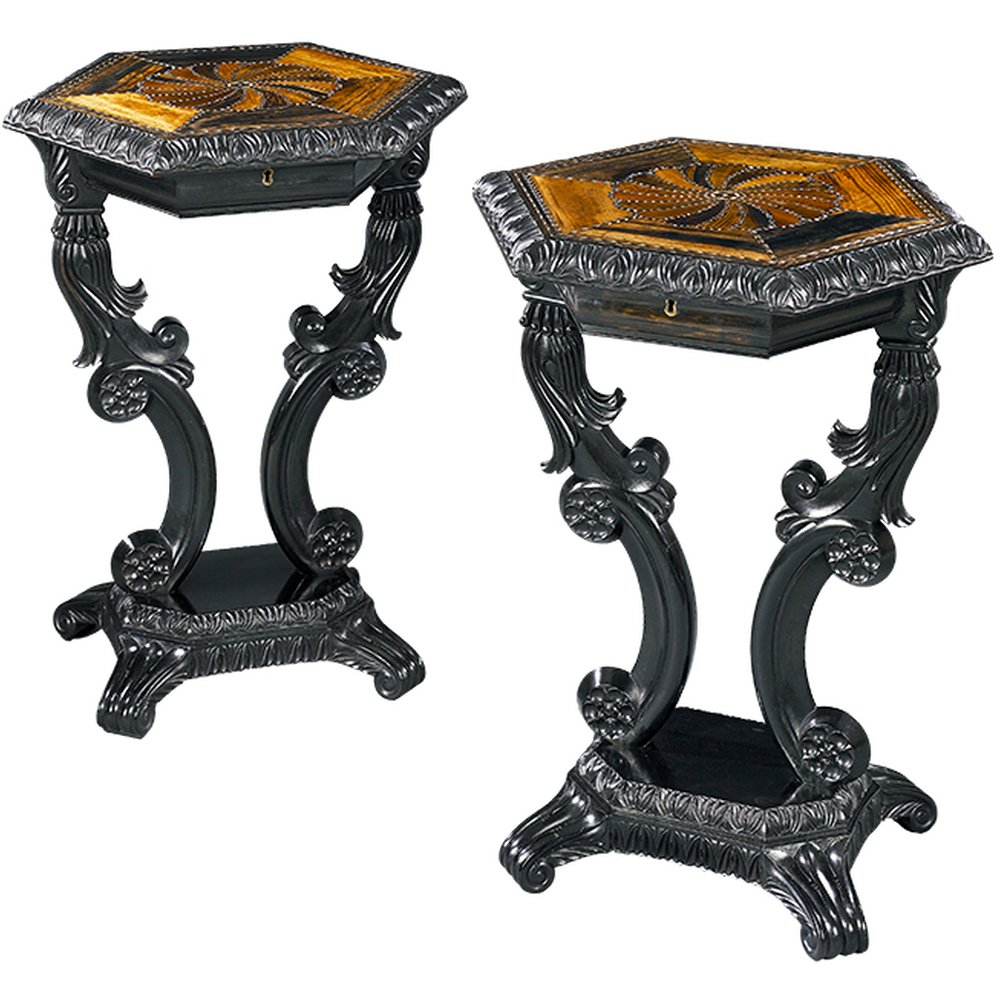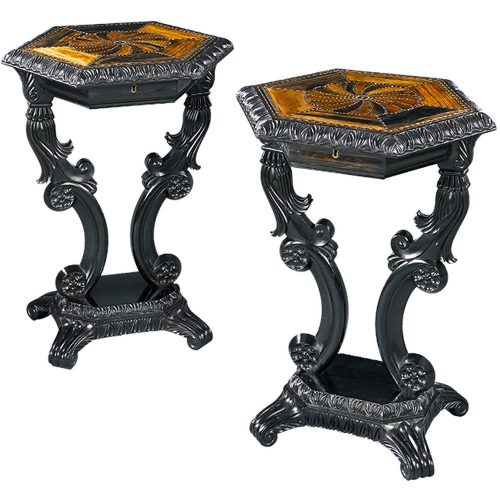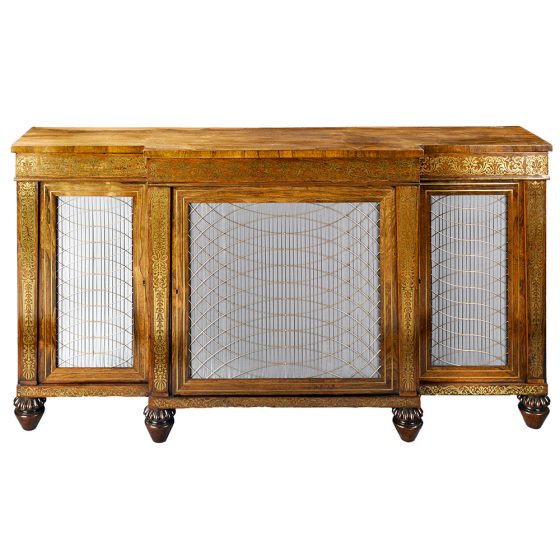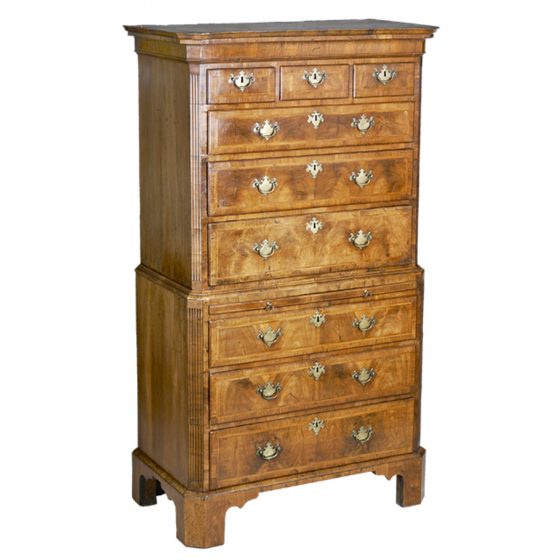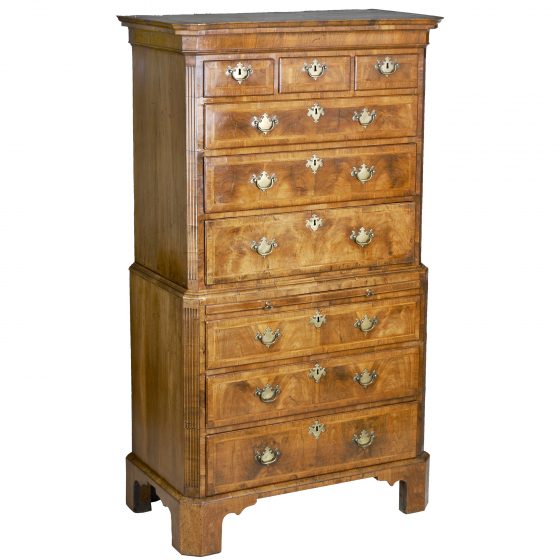A fine pair of 19th century Ceylonese specimen wood and carved ebony occasional tables, the octagonal top with leaf carved edge and central swirling flowerhead inlay, with radiating veneers of specimen native woods, within feather-banded and white metal inlaid borders, above a cushion moulded frieze, with frieze drawer, on lotus leaf and double c scroll supports on a leaf carved platform base with scroll feet.
Literature
The use of specimen woods as a decorative feature was distinctive to Galle District and Ceylonese specimen wood tables first occur in the second quarter of the 19th century. The handling of the inlay on the tops of these tables is incredibly sophisticated, suggesting that by this time the makers were experienced in this type of production. References to the inlaying of specimen woods appear in accounts of the period, H.C. Sirr writes that at Galle there are also manufactured those exquisite inlaid articles…ivory and various coloured native woods are inlaid upon ebony and the designs are well defined (Amin Jaffers Furniture from British India and Ceylon, V & A Publications, 2001,p. 373.)
The table tops are generally consistent in decoration and design, with variations in pattern determined by the shape of the table top. The hexagonal and rectangular tables usually had scrolled supports and the top is typically inlaid with a central radiating roundel within triangular segments and divided by chevron borders.

